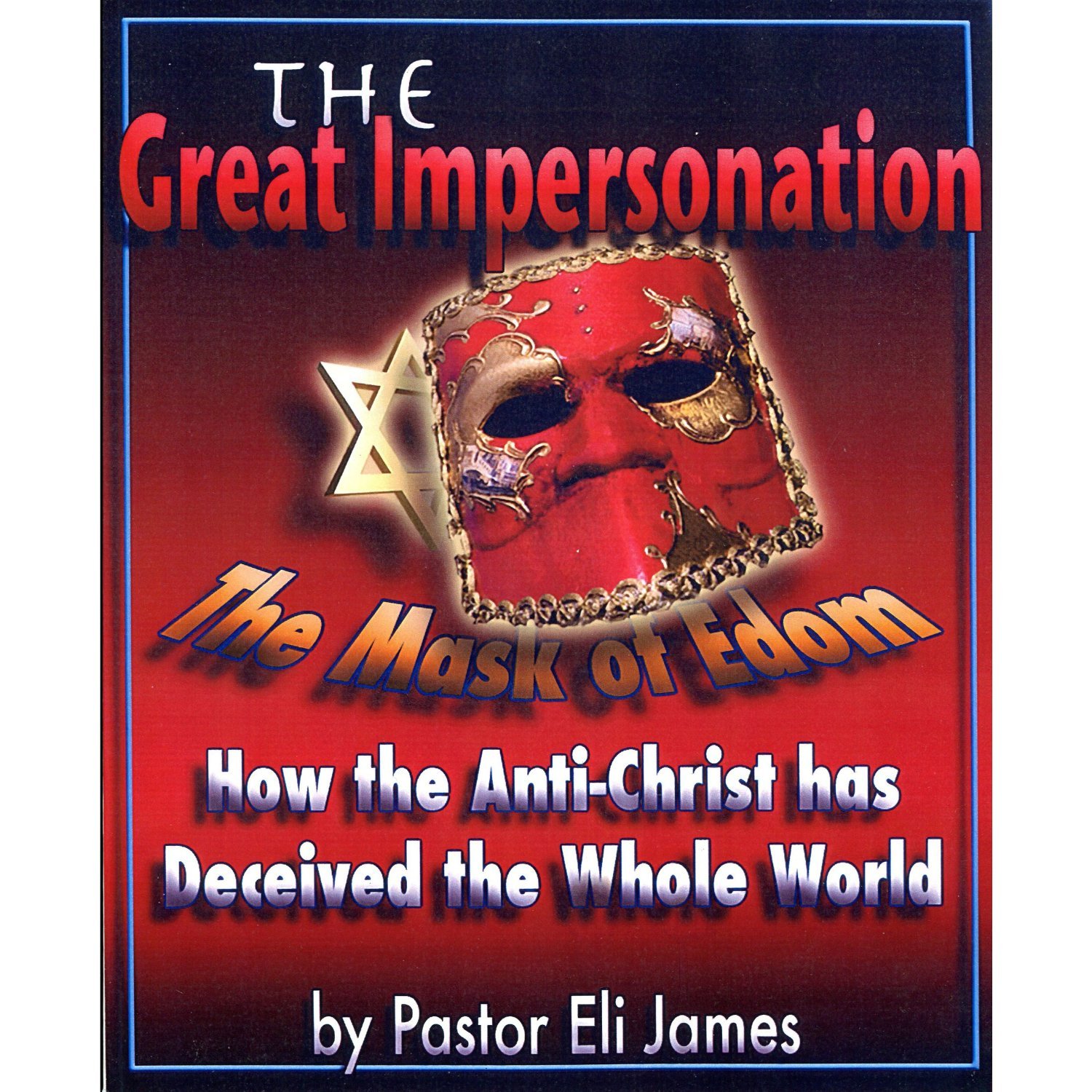Weapons of Mass Immigration
The immigration invasion is caused by Jews, who bomb the hell out of Islamic countries, blame the west, and then flood Western countries with “refugees.” Do you smell a jooish rat?
Rec Ice exposes Jewish control of the Muslim invasion.
Remember that IsraHELL does not accept ANY non-Jewish “refugees.” This is a Joo-sponsored weapon of mass immigration.
The world is finally catching up with EFR. Excellent article on the subject of Jewslam, the exploitation of Muslims by the Jews:
Wednesday, December 28, 2016
Europeans, Jews, Muslims and the Legacy of Islamic Spain – Part 1: The Jewish Role in the Moorish Invasion and Occupation
Part 1: The Jewish Role in the Moorish Invasion and Occupationby Sean Jobst
December 27, 2016
(Edited with additional sources: 15 October 2017)
A recent tendency has arisen within the alternative/truth movement, where any criticism of the actions of Muslims at the expense of white Europeans is castigated as shilling for Zionism. This is no matter how much we devote ourselves to the cause of Palestine and opposing the Zionist policies of Western governments against Muslim lands – the very moment we also talk about the leading role of Jews behind the mass-migration of mostly Muslims into Europe and the accompanying Islamist cultural and demographic imperialism at the expense of our peoples, we are attacked despite all our other efforts about Palestine and Syria, or Libya and Iraq, or against drone bombings against Afghans, Pakistanis and Yemenis, or against the IMF/World Bank looting of “third world” peoples.
Such people reveal their personal cultural bias, which is that their opposition to Zionism is only when its directed against their own people – they are more than willing to either deny or, in some cases, actively support Zionist crimes against white Europeans – especially when it comes to benefitting from the environment of Political Correctness that would ensure laws against any criticism of Muslims, much like the thought-crime laws against “anti-Semitism”. While we know the role of Western governments against other peoples, with a history of imperialism that benefitted the ruling elites and banking dynasties, history is also rife with examples of Jews supporting and using Muslims against Europeans. The most well-known example is the Moorish invasion and occupation of Spain and Portugal, and by highlighting this aspect of history I am asserting my identity unapologetically, como un hijo de Castilla y España….
The North African Origins of Jews in Spain
Identified as a westernmost land in the Bible (Obadiah 1:20), Sepharad is the Hebrew name for Spain and alludes to the historical links between Jews of the Iberian Peninsula with those of North Africa. Jewish historian Salo Baron identified many of these Jews as descendants of Carthaginian converts: “If, as seems to have been the case, a large number of former Phoenicians and Carthaginians had joined the Jewish community with conversion, they must have brought some of their commercial skills and contacts into their new communities.”(1) Professor Shlomo Sand, the Tel Aviv University historian who established the convert (i.e., non-Hebrew) origins of modern Jewish communities, traced the origins of Sephardic Jews with Carthaginians and Berber tribes that had converted to Judaism. As he said in an interview with an Israeli newspaper:
“I asked myself how such large Jewish communities appeared in Spain. And then I saw that Tariq ibn Ziyad, the supreme commander of the Muslims who conquered Spain, was a Berber, and most of his soldiers were Berbers. Dahia al-Kahina’s Jewish Berber kingdom had been defeated only 15 years earlier. And the truth is there are a number of Christian sources that say many of the conquerors of Spain were Jewish converts. The deep-rooted source of the large Jewish community in Spain was those Berber soldiers who converted to Judaism.”(2)
Sand was referring to Dihya, the Berber queen who converted to Judaism and founded a Jewish kingdom that ruled the land between the Aures mountains to the oasis of Gadames, from 695 to 700. After her kingdom was conquered by the Arabs, she was beheaded but her sons Bagay and Khanchla, converted to Islam and led many of the Berber units “sent against the West [Spain] to make war (jihad) in the name of God.”(3) Some accounts considered her a Christian rather than a Jewess, but the importance here is the legend as it would have been viewed by Jewish contemporaries. We can nevertheless conclude that the spread of Judaism which occurred after the Roman defeat of Carthage in 146BC and thereafter spread to many Berber tribes, means that the Jews of the Iberian Peninsula had North African origins and thus were not indigenous to Hispania. Thus, the “native” Jews there had direct ethnic, tribal and cultural links with the Moors.
Jews Welcomed and Aided the Moorish Invasion
Many Jewish scholars and historians have affirmed the valuable aid which Jews of the Iberian Peninsula gave to the Moorish invaders in 711.(4) This was confirmed by the Jewish Encyclopedia: “It remains a fact that the Jews, either directly or through their coreligionists in Africa, encouraged the Mohammedans to conquer Spain and that they greeted them as their deliverers.”(5) The conquering Moors entrusted the occupation of Córdoba to local Jews, and Granada, Málaga, Sevilla and Toledo to mixed garrisons of local Jews and Moorish troops. This was confirmed by the German-Jewish historian Heinrich Graetz (1817-1891), whose History of the Jews reveals many politically-incorrect facts about the corrosive role of Jews in European history:
“The Jews of Africa, who at various times had emigrated thither from Spain, and their unlucky co-religionists of the Peninsula, made common cause with the Mahometan conqueror, Tarik, who brought over from Africa into Andalusia an army eager for the fray. After the battle of Xeres (July, 711), and the death of Roderic, the last of the Visigothic kings, the victorious Arabs pushed onward, and were everywhere supported by the Jews. In every city that they conquered, the Moslem generals were able to leave but a small garrison of their own troops, as they had need of every man for the subjection of the country; they therefore confided them to the safekeeping of the Jews. In this manner the Jews, who but lately had been serfs, now became the masters of the towns of Cordova, Granada, Malaga, and many others. When Tarik appeared before the capital, Toledo, he found it occupied by a small garrison only, the nobles and clergy having found safety in flight. While the Christians were in church, praying for the safety of their country and religion, the Jews flung open the gates to the victorious Arabs (Palm Sunday, 712), receiving them with acclamations, and thus avenged themselves for the many miseries which had befallen them in the course of a century since the time of Reccared and Sisebut. The capital also was entrusted by Tarik to the custody of the Jews, while he pushed on in pursuit of the cowardly Visigoths, who had sought safety in flight, for the purpose of recovering from them the treasure which they had carried off. Finally when Musa Ibn-Nosair, the Governor of Africa, brought a second army into Spain and conquered other cities, he also delivered them into the custody of the Jews.”(6)
Jewish aid was crucial in freeing up countless Moorish troops to conquer nearly the entirety of the Iberian Peninsula. The example of Toledo, when Jews flung open the gates of the city while the Christian inhabitants were preoccupied in their holy procession at San Locadia Church, illustrates why even such a historian as Francisco Cantera Burgos, whose work was far from unsympathetic toward Jews, said the Jews of Spain constituted a “fifth column” during the invasion.(7) Citing Moorish works, Pascual de Gayangos observed that Jews invited the Moors to invade and afterward “everywhere made common cause with them.”(8)
The original Moorish invasion force that defeated the Visigoths at Guadalete included a continent of Jewish troops from North Africa under the command of Kaula al-Yehudi, and throughout the occupation the Moorish rulers encouraged Jewish immigration from elsewhere as part of their counterbalancing the indigenous population.(9) Whereas now its mostly Jewish social-engineers and bankers promoting the mass-migration of Muslims into Europe, then it was Muslim Moors who promoted the mass-migration of Jews to dilute and serve as a counterbalance to the indigenous Iberian peoples. Their motive was described by the Argentine Muslim academic Ricardo H. Elía: “Muslims acknowledged that Jews were true believers and their natural allies in the cause of the one God.”(10)
 |
| Jewish slave-trader presenting slaves to King Boleslaus I of Bohemia |
Jewish Slave-Traders
What were the “miseries” which had befallen the Jews of Spain? Professor Graetz answers by pointing out among those “miseries” inflicted by King Reccared, “the most oppressive of all was the restraint touching the possession of slaves. Henceforward the Jews were neither to purchase Christian slaves nor to accept them as presents.”(11) Jewish slave-traders dominated the trade of Slavic and Spanish slaves to the Moors: “Agobard claimed that, notwithstanding this provision, the Jews kept Christians as slaves, citing the instance of a Christian refugee from Cordova who declared that his coreligionists were frequently sold, as he had been, to the Moors. Many, indeed, of the Spanish Jews owed their wealth to the trade in Slavonian slaves brought from Andalusia (Gratz, ‘Gesch.’ vii.). Similarly, the Jews of Verdun, about the year 949, purchased slaves in their neighborhood and sold them in Spain (Aronius, ‘Regesten,’ No. 127).”(12)
Not surprisingly, given that European history is rife with examples of traitors who collaborated with Jewish merchants and usurers against their own peoples, many European monarchs were complicit in the Jewish slave-trade of other Europeans. The feuding Catholic and Arian monarchs consented to the enslavement of the other “heretical” group by Jews – neither saw any problem with Jews enslaving those Europeans who were still “heathen.” In 492, Pope Gelasius permitted Jews to introduce heathen Celtic slaves from Gaul into Italy. Pope Gregory (590-604) noted that Jews dominated the slave-trade in both Gaul and Britain, with increasing Church efforts to rein in Jewish trade of Christian slaves whilst consenting to continued trade of non-Christian slaves. According to Abraham ibn Yakub, Jews from Constantinople regularly purchased Slavic slaves in Prague for trade in Byzantine lands. Frankish King Louis the Fair (814-840) granted charters to Jewish slave-traders, so long as their slaves were heathens and not Christians. According to Aronius, Bavarian Christian merchants collaborated with Jews in trading other Europeans, while the Margrave of Meissen even sold many of his subjects to Jews.(13)
 |
| Visigothic Hispania in the year 700 |
Myth of Visigoth Persecution of Jews
One of the establishment historians’ claims is that, if they do indeed admit that Jews actively aided and supported the Moorish invasion, it was revenge at the “cruel” persecution of Jews within Visigothic Spain. While Jews were often the subject of Visigothic law codes, they were sometimes favorable towards Jews and even the laws against them were rarely enforced by monarchs who increasingly relied on Jewish capital. This was a common theme throughout European history, where Jews were regarded as “protected” by the ruler, who would often “protect” them even against his own people. European rulers thus often put their own personal desire for Jewish capital and turned a blind eye to many predatory and exploitative actions against their own people, such as usury or – as we have just seen – the Jewish role in slavery.
Just as with Roman Palestine, the Jewish rabbinical authorities exercised much autonomy and essentially formed a state within a state. Some Jews converted to the Catholic faith of the dominant population, and the authority of the rabbis over them was such that the Lex Romana Visigothorum of 506 specifically forbade Jews from persecuting Jewish apostates to Christianity.(14) Frequently, Visigothic laws concerning Jews were judged as too “flexible” judging by the repeated admonishments within the Visigoth Code regarding the need to enforce their own laws, the creation of new laws to reinforce the previous laws, the punishments listed against Christians who violated the laws by favoring Jews, and the existence of a Jewish community still strong enough to have been a factor with the Moorish invasion.(15)
 |
| Page from the Barcelona Haggadah |
“Golden Age of Spanish Jewry”
While indigenous Iberians were losing their lands to a foreign occupying army, the Moorish invasion ushered in what Jewish scholars have glorified the Golden Age of Spanish Jewry. “That was the golden age of the Israelites, who were always equal with Muslims.”(16) “Thus, when Muslims crossed the straits of Gibraltar from North Africa in 711 CE and invaded the Iberian Peninsula, Jews welcomed them as liberators from Christian Persecution. Born during this era of Islamic rule, the famous Golden Age of Spanish Jewry (circa 900-1200) produced such luminaries as: statesman and diplomat Hasdai ibn Shaprut, vizier and army commander Shmuel ha-Nagid, poet-philosopher, Solomon Ibn Gabriol and Judah Halevi, and at the apex of them all, Moses Ben Maimon, also known among the Spaniards as Maimonides.”(17) The local Jewish community was joined by an influx of Jewish migrants from the rest of Europe, and from Arab territories as far away as Babylonia.(18) Graetz even compared it with the ancient Jewish “Golden Age” in Babylonia:
“Jewish Spain became ‘the place of civilization and of spiritual activity – a garden of fragrant, joyous, and happy poetry, as well as the seat of earnest research and clear thought.’ Like the Arabian Christians (the Christians who lived amongst the Mahometans) the Jews made themselves acquainted with the language and literature of their conquerors, and often got precedence over them. But whilst Arabian Christians gave up their own individuality, forgot their own language – Gothic Latin – and could not even read the creeds, and were ashamed of Christianity, the Jews of Spain were so little affected through this contact with Arabs, that it only served to increase their love and enthusiasm for their mother tongue, their holy law, and their religion. Though favourable circumstances Jewish Spain was in a position at first to rival Babylonia, then to supersede it, and finally to maintain its superiority for nearly five hundred years.”(19)
“It was in these favourable circumstances that the Spanish Jews came under the rule of Mahometans, as whose allies they esteemed themselves the equals of their co-religionists in Babylonia and Persia. They were kindly treated, obtained religious liberty, of which they had so long been deprived, were permitted to exercise jurisdiction over their co-religionists, and were only obliged, like the conquered Christians, to pay poll tax (Dsimma).”(20)
The Moorish environment actually breeded a revival of Jewish religious learning and, in proto-Zionist fashion, a revival of the nearly-extinct Hebrew language. Writing in Arabic, Rabbi Moses ben Jacob Ibn Ezra (1055-1138) of Granada wrote: “And when the Arabs conquered the Peninsula of al-Andalus….from the Goths, who had been victorious over the Romans…, after a long time our diaspora captured its own personality, laboriously learned its language and became outstanding in its use, penetrating the subtlety of its intentions, training in the true infection of its words, tasting the sweetness of its verses, until God revealed to it the secrets of the Hebrew language and its grammar….All this was speedily learned by our minds, understanding what they had earlier ignored.”(21)
 |
| Jew and Muslim playing chess in 13th-century Andalusia |
A Jewish State-Within-A-(Moorish)State
The German-Jewish historian Josef Kastein (1890-1946), known for his Zionist interpretation of the Old Testament, writes: “Judaism, dispersed as it was over the face of the globe, was always inclined to set up a fictitious state in the place of the one that had been lost, and always aimed, therefore, at looking to a common center for guidance….This centre was now held to be situated in Spain, whither the national hegemony was transferred from the East. Just as Babylonia had providentially taken the place of Palestine, so now Spain opportunely replaced Babylonia, which, as a center of Judaism, had ceased to be capable of functioning. All that could be done there had already been accomplished; it had forged the chains with which the individual could bind himself, to avoid being swallowed up by his environment: the Talmud.”(22)
Douglas Reed commented on this: “The Talmudic government of the nation-within-nations was continued from Spanish soil. The Gaonate issued its directives; the Talmudic academy was established at Cordova; and sometimes, at least, a shadowy Exilarch reigned over Jewry. This was done under the protection of Islam; the Muslims, like Babylon and Persia before, showed remarkable benevolence towards this force in their midst. To the Spaniards the invader came to bear more and more a Jewish countenance and less and less a Muslim one; the Muslims had conquered, but the conqueror’s power passed into Jewish hands. The story which the world had earlier seen enacted in Babylon, repeated itself in Spain, and in later centuries was to be re-enacted in every great country of the West.”(23)
Jews Profited From the Moorish Occupation
Even the paying of the jizya, the poll-tax which non-Muslims must pay under Islamic rule, did not change these “favorable circumstances” because the Jews profited immensely and rose as a privileged economic class with the Moorish occupation: “When the Moors invaded Spain, the Jews stood between them and the native Spaniards, so great did the economic strength of these Jews grow that their wealth was compared with that of the caliph himself.”(24) Jews came to dominate the professions of medicine, commerce, finance, and agriculture.(25) As viziers, counselors and bankers to the Moorish kings, Jews were taken as intermediary between the Muslim rulers and the subjugated Christians, with contemporary Islamic sources admitting this was a “divide and conquer” strategy against the Spanish Christians.(26)
Jews made common cause with the Muslim rulers against Spanish rebels such as Umar ibn Hafsun and Saint Eulogius, and against the Reconquista forces of King Alfonso III of Asturias (reign 866-910). They also sat with Muslims in the Christian Council of Córdoba in 863 to ensure the Council did not encourage rebelliousness to the occupying powers.(27) Their power was such that the Muslim historian Muhammad ibn Muhammad al-Idrisi wrote of their segregationist policies within their own neighborhoods: “Jews would not allow Muslims to enter the Jewish inner city. They are wealthier than any of the countries under Muslim domination, and they keep on their guard against the enterprises of their rivals.”(28)
 |
| Jewish cantor reading for Passover |
Powerful Jews in the Moorish Courts
The first independent Caliph of Córdoba, Abd ar-Rahman III (reign 912-961), had a Jewish councilor named Hasdai ibn Shaprut (882-942), who rose from court physician to supervising customs and foreign trade. He was the famous correspondent with the Jewish kingdom of the Khazars in Russia.(29) Under Hasdai’s patronage, Córdoba became the “Mecca of Jewish scholars who could be assured of a hospitable welcome from Jewish courtiers and men of means.”(30) As would later be seen with the influence of Jewish financier Joseph Nasi over the Ottoman court of Sultan Selim II, Hasdai used his influence to ensure a pro-Jewish foreign policy for Moorish Córdoba. In a letter to the Greek Roman Princess Helena, the Sultan of Córdoba requested protection for the Jews under Greek Roman rule, tying the treatment of Christians in Moorish Spain to that of the Jews of Constantinople, such that the former was contingent on the latter.(31)
Another powerful Jew in the Moorish court was Samuel Ha-Nagid ibn Nagrela (993-1056), who served Granada’s King Habbus and his son Badis for thirty years. Aside from writing an introduction to the Talmud widely revered today, he was policy director and military leader who was one of only two Jews to command Muslim armies – the other being his son, Joseph. His son Joseph was also vizier, who was murdered in the 1066 Granada massacre against Jews. There were other Jewish viziers serving in Sevilla, Lucena and Saragossa.(32) Without denying the Nagrela family’s influence over the Moors, the Spanish philologist and Arabist Felipe Maíllo Salgado has disputed the story of Ibn Nagrela leading Muslim armies into battle.(33)
Muslim Scholars Admit Spanish Resentment at Jewish Power under Moors
The powerful role of Jews in the political affairs of the occupying powers obviously created much resentment among the indigenous population and was a major contributing factor behind the eventual expulsion: “The main reasons for the expulsion of the Sephardic Jews from Spain were a combination of revenge and jealousy on the part of the Christians – revenge, because in their eyes their ancestors had been betrayed by those Jews who had assisted the Muslims in conquering most of Spain during the eighth century; and jealousy, because, as has already been mentioned, the Jews of Spain had achieved great prominence during the period of Muslim rule, and indeed had become an indispensable part of Spanish society, not only as a result of their commercial and financial dealings, and not only by virtue of their contributions to and knowledge of the various arts and sciences, but also because of their essential role in the administration and governance of that society.”(34)
In an article that praised and documented this nexus of Jews and Moors in Spain, one Muslim writer wrote: “The professors Allan Harris Cutler and Helen Elmquist Cutler, American academics recognized, have developed a thesis demonstrating to fund this context. His work, entitled The Jew As Ally of the Muslim: Medieval Roots of anti-Semitism, published by the University of Notre Dame Press (Notre Dame, Indiana, 1986) gave evidence, through multiple sources and historical facts, that the tendency of Medieval Europeans was to see the Jew as an ally of the Muslim, feeling that was the main factor which developed anti-Semitism. The logic of the Cutlers says that one of the main reasons that promoted hatred against Jews by the Europeans was that those, on numerous occasions, helped and were protégés of Muslims in Arab Spain, during the Crusades and in the period of the Ottoman Empire.”(35)
The Decline of Jews in Al-Andalus
The rise of laxity towards Islamic law by the ruling elites of Moorish Spain, itself largely from interaction with the indigenous Spaniards, led to a successive wave of two new North African Islamic dynasties which swept across the Iberian Peninsula beginning in 1090, under the banner of strict adherence and implementing of shari’a and renewed jihad against the Spaniard “kuffar” and their “harmful” influence upon Andalusian Muslims. Even under the first of these dynasties, the Almoravides, the Jewish poet Moses ibn Ezra continued to write freely, and several Jews served as diplomats and physicians to the Almoravid court.(36) Jews who held the powerful position of vizier during this period included Solomon ibn al-Mu’allam, Abraham ibn Meir ibn Kamnial Abu Isaac ibn Muhajar, and Solomon ibn Farusal.
The situation changed drastically following the expulsion of the Almoravides in 1148, and their replacement by the even-more puritanical Almohades. Many Jews fled to more tolerant Muslim lands and many even immigrated to different Christian principalities of the Reconquista.(37) Much had changed from the time when Moorish Andalus became the new “Jewish Babylonia” and where there was a great flowering of Jewish economic, social, political and religious power; when many new versions of the Talmud and Cabbalistic texts were widely published and studied. The well-known Jewish philosopher, Moses Maimonides (1135-1204), wrote about the Almohades in his Letter to Yemen: “Dear brothers, because of our many sins Hashem has cast us among this nation, the Arabs, who are treating us badly. They pass laws designed to cause us distress and make us despised….Never has there been a nation that hated, humiliated and loathed us as much as this one.”(38)
 |
| Maimonides |
The Granada Massacre of 1066: A Catalyst of Changing Jewish Fortunes
The changing fortunes of Jews under the Almohades was the culmination of a process that began with the massacre of the entire Jewish population of Granada by a Muslim mob in 1066. In characteristic Zionist fashion, this has been dismissed as a spontaneous uprising instigated by an “anti-Semitic” poem of the demagogue Abu Ishaq.(39) The 1906 edition of The Jewish
Encyclopedia nevertheless said in context that the Jewish vizier Joseph ibn Nagrela “controlled” King Badis al-Muzaffar of Granada and “surrounded him with spies.”(40)
On the evening of 30th December 1066, a Muslim mob gathered outside the royal palace where Joseph ibn Nagrela took refuge, stormed it and then crucified him. This was followed by a general massacre of Jews throughout Granada: “More than 1,500 Jewish families, numbering 4,000 persons, fell in one day.”(41) Although disputed by other Jewish scholars, this figure is still higher than in the much-more publicized pogroms against Jews in the German Rhineland not too much later.(42) This is not surprising, given the constant shaming of Germans over the “Holocaust” or that of Spaniards over the expulsion of the Jews in 1492 and the following Inquisition. There seems to be more of a use of such massacres as waged by Europeans, to continuously apologize to Jews and thus exalt Zionism.
Conclusion
Nevertheless, the experience of the Almohades was temporary and Jewish fortunes again raised under later Moorish kingdoms. This culminated in the presence of a Jewish division, under a Jewish flag, in the army of Granada Sultan Muhammad IX against the Castilian army: “In 1431, in the battle of the Higueruela, stood several battalions of Granada Jewish fighters who fought alongside their Muslim brothers against the Castilians.”(43) This nostalgia later manifested in the building of synagogues in Moorish style throughout Europe and North America. The Jewish “Golden Age” under the Moors was an inspiration for modern Jewish intellectuals, such as Heinrich Heine (1797-1856):
“Later, at the beginning of the 19th century, European Jewish intellectuals proclaimed admirer of the Muslim to reaffirm their identity and defend their rights before the persecutions suffered by individual countries. We have the case of Heinrich Heine, who claimed to be Muslim and wrote a poetic tragedy, Almanzor (1821), lamenting the fall of Muslim Spain. A scholar of the history of Islam, the Professor Reuven Amitai in the Hebrew University of Jerusalem, in one of the conferences held in Buenos Aires, in October 2008, conspicuously explained: ‘Judaism and Islam have so much in common, and the history of Jews and Muslims is so intertwined, as saying that he is a Muslim Heine is stating that he has never stopped being a Jew despite his external conversion.'”(44)
Israeli scholar Gideon Libson described a two-way process of influence between Jewish Halacha and Islamic Shari’a codes: A feedback model where the Talmudic system first impacted Islam, which at a later stage left its imprint on Talmudic law. He drew comparisons between the shared etymology between “Halacha” and “Shari’a”; how both expand upon a book with an oral tradition, Talmud and Hadith; and how these two law structures are all-comprehensive. Judaism developed from contact in Muslim lands such as Moorish Andalusia: “In fact the two religions are so close in terms of their structure that the tenth-century rabbinic leader Saadia Gaon would unselfconsciously refer to Jewish law as sharia, to the prayer leader in a synagogue as an imam and the direction in which Jews faced when praying as qibla.”(45)
{Source: https://sjobst.blogspot.com/2016/12/europeans-jews-muslims-and-legacy-of.html }





